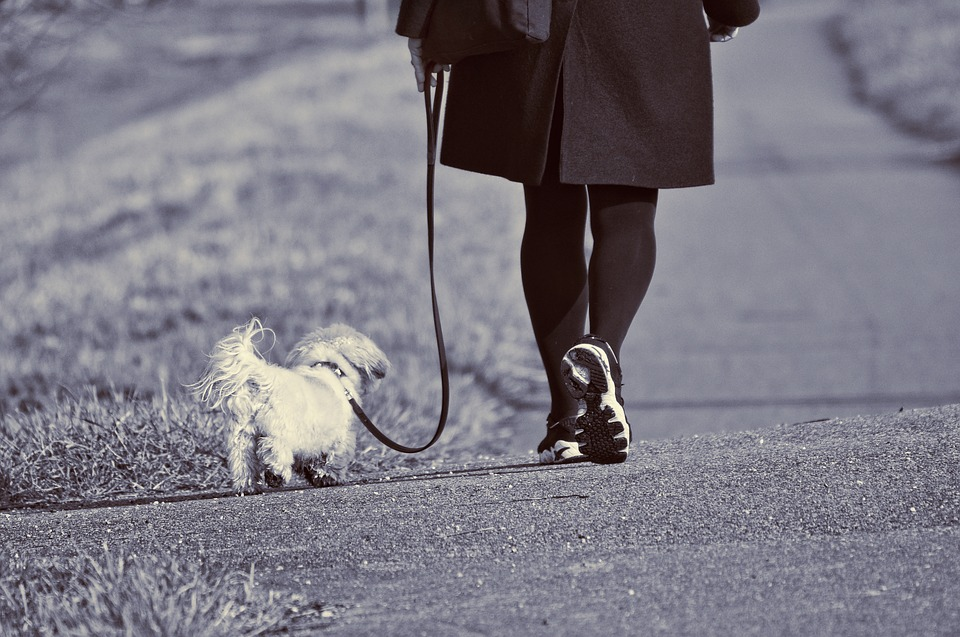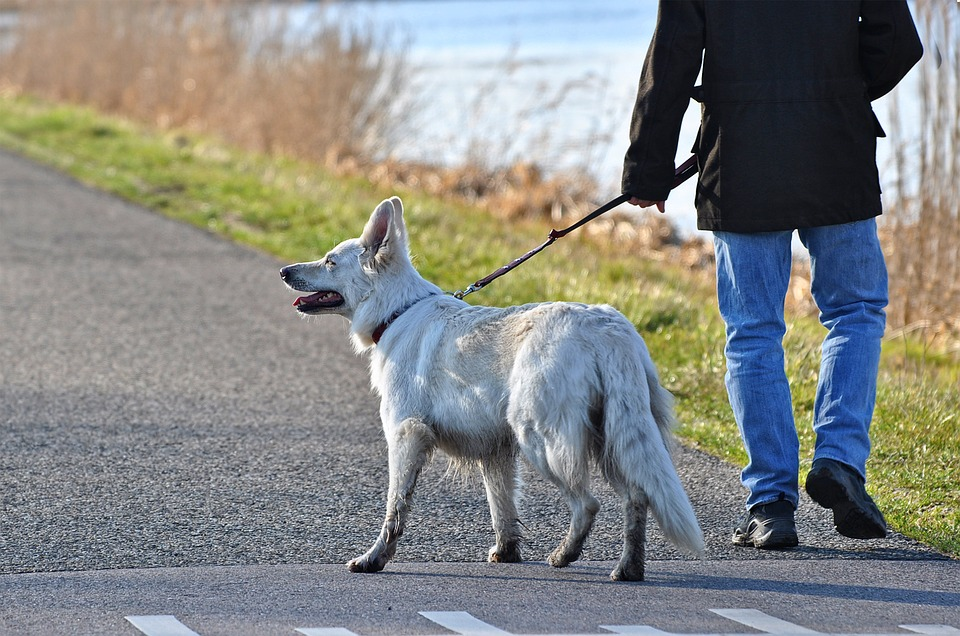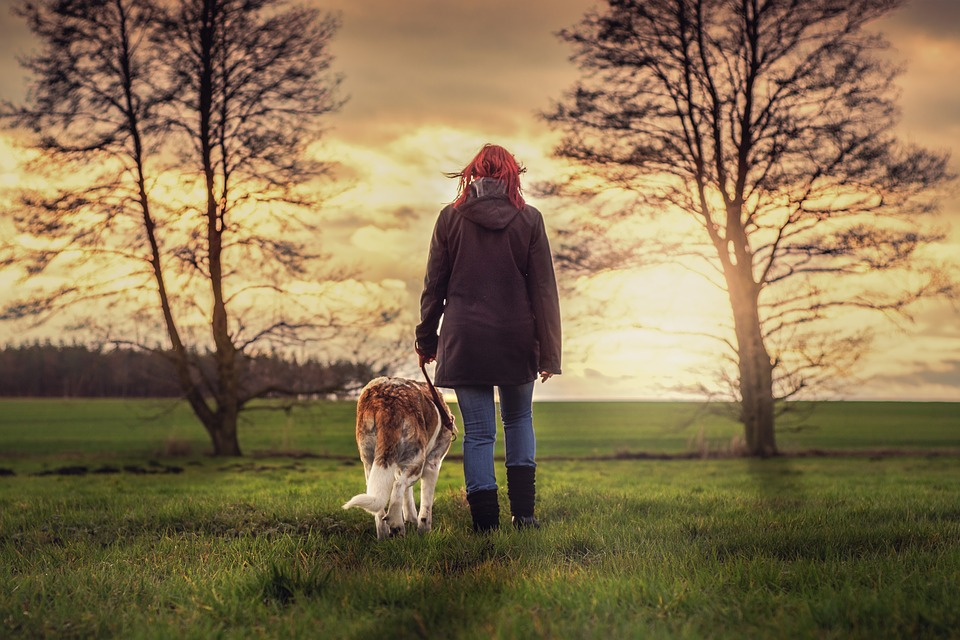Going for a walk with your dog should be a peaceful experience. It’s an activity you will have to do almost every day, so walking your dog should enable you to enjoy fresh air, exercise, and bonding time with your pup.
Unfortunately not all of us have such a serene experience when we are connected to our canine companions by a leash. Many of us have experienced constant tugging, random bursts of speed, and rope burns from the leash.
What can we do? Must we resign ourselves to feeling like our arms are departing their sockets every time we try to exercise our dogs? How to train a dog to walk on a leash without pulling? Enter loose-leash walking.

Why Loose Leash Walking Is Important
Loose-leash walking is just that, the act of your dog walking next to you without any tension on the leash. This is not to be confused with “heeling”, a competitive and precise activity wherein your dog is expected to walk very close to your leg with their attention entirely focused on you. Heeling for an entire walk wouldn’t be much fun for your dog and would inevitably defeat the purpose of taking your pooch outside.
A dog who will loose-leash walk is important for your sanity, but also for the health and safety of yourself and those around you.
If your dog is large enough, dragging you down the sidewalk could lead to you falling and injuring yourself. Likewise, a large dog could jump up on someone and injure them as well (for a habitual jumper practice the Polite Greeting Game). Even a small dog pulling on the leash may wrap you up and trip you, possibly leading to injury.
Not only can leash-pulling lead to human injury, but your dog can hurt themselves as well. Dogs have been known to injure their necks or rub them raw from constant tugging. A dog who pulls the leash out of their owner’s hands can quickly run into trouble in the form of other dogs, wild animals, or moving cars.

How To Train a Dog to Walk on a Leash Without Pulling
Whether you have a brand new puppy or an older dog, it’s never too late (or too early!) to start laying down the fundamentals for a loose-leash walking champion. Follow these steps to ensure your dog becomes a brilliant walking companion.
Each step may take several training sessions. Always be patient, limit sessions to no more than 10 minutes, and always end on a positive note with a good play bout.
1. Teach Your Dog To Enjoy Being Near You
What may come as a surprise is that the first step to loose-leash walking doesn’t actually involve a leash! Instead of forcing your dog to remain near you from the get-go, this initial step focuses on teaching your dog that being near you means good things, like treats and pats.
The goal is for your dog to choose to be near you.
A dog that chooses to be close to you, instead of being forced to do so, will be much more likely to pick up loose-leash walking. You will also have a much more enjoyable experience with your pooch when they spend time with you willingly.
Accomplish this step by spending time with you dog in a safe, fenced-in area free of distractions. Keep a handful of treats inside your closed hand, and while your dog explores the area, slowly walk around. When your dog approaches your hand, open it to give your dog a treat, then close it again and keep walking. Each time your dog approaches you and sniffs your hand, give them a treat. Eventually, your dog will discover that staying close to you means he or she gets yummy treats.
2. Introduce Your Dog To the Leash
For best results, this step should also be conducted in a fenced-in area with minimal distractions. Attach the leash to your dog’s collar and let it drag on the ground behind them. Your dog may try to chew on it or pick it up, especially if he or she is very young.
Just like in the last step, walk slowly around the area, but this time you will call your dog to walk with you. If he or she is too distracted by the leash, try enticing them with a treat while you are walking to help them focus. The goal of this step is to get your dog walking next to you around the yard, ignoring the leash and coming to your side when you call.
3. Limit Your Dog’s Range
It’s time to pick up the leash: loop the end around your wrist. Carry a handful of treats with you as you walk around the yard. Give your dog a treat every few steps by holding it in your hand, down by the side of your thigh. This conveys the idea that your dog gets a treat for being very close to your side while you hold the leash.
Other than providing treats, ignore your dog. If he or she moves away and reaches the end of the leash, stop walking until you get slack back in the line. Over time, give treats less often: after every 10 steps, every 25 steps, etc.

Troubleshooting
Though these steps may make it seem simple, teaching a dog how to walk on a leash without pulling can be a long and often frustrating process. Here are some common problems dog parents may run into.
Your pup is determined to pull and stopping makes him or her pull more.
When your dog pulls, turn around and quickly walk the other way. Do not talk to them, do not call them, simply ignore them and walk away. This forces your dog to focus on you and where you’re going rather than what direction they want to drag you.
Your pulling pup won’t respond to the training techniques.
You’re following all the steps and advice and your dog is still trying to dislocate your shoulder. This can be incredibly frustrating. Not all training techniques work for every dog, and some alternative methods are available. These methods include different collars and halters to give you better control. Some trial and error may be necessary to find what works best for you and your dog.
Loose-leash Walking: Enjoyable Exercise With Your Dog
Knowing how to train a dog to walk on a leash without pulling won’t be all it takes. Progress can seem slow and sometimes even nonexistent, but your patience and dedication will eventually pay off in the form of a loose-leash walker. Once your dog begins to understand the concept that hanging out close to you on a walk is even more fun than dragging you all over the neighborhood, walking your dog can become a peaceful and joyous experience.

